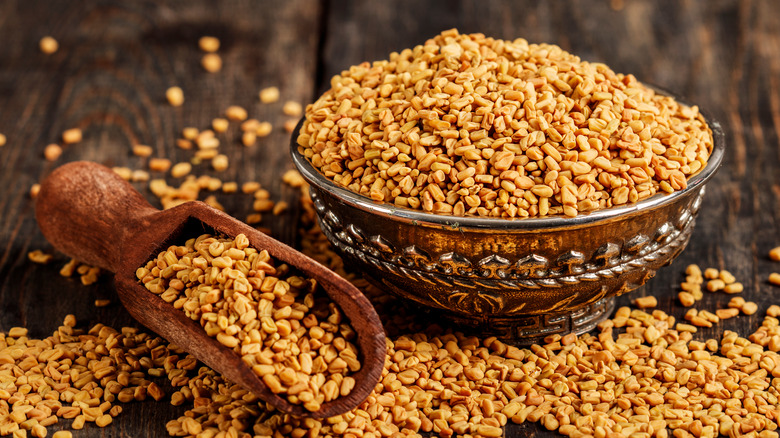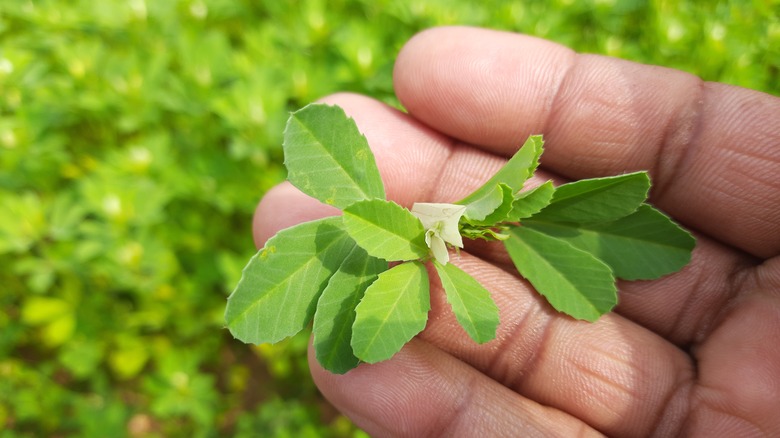Fenugreek: What It Is And How To Use It
Fenugreek is a clover-like herb commonly found in the south of Europe, Asia, and throughout the Mediterranean region, as described by the National Center for Complementary and Integrative Health. Yet, the most appealing part of the plant might be the small, golden seeds that smell like sweet maple syrup. Fenugreek extract can be found in soaps, teas, and spices, and the plant has the reputation of being one of the oldest medicinally-used herbs (per Medical News Today).
Science Direct reports that in addition to immune-supporting and cancer-fighting properties, the antioxidant-rich legume has acted as a food stabilizer, adhesive, and emulsifying agent in food product research and development. Whether added to creamy dishes or taken as a supplement, fenugreek might be the versatile secret ingredient missing from your kitchen. Read on to discover how the leaves and oblong seeds from this plant could be the health-supporting ingredient your sauces, curries, and spice blends need.
A plant with many uses
Fenugreek leaves can be found fresh, dried, or frozen and used as a finish for soups and curries, suggests Masterclass; the seeds taken from the plant pods can be added to spice blends, dry rubs, and even tea. Chef Chintan Pandya insists dried fenugreek leaves add a rich complexity to fatty, oily, and creamy dishes and make the perfect addition to marinades. Whole seeds can be cooked in warm oil or dry roasted before being added to stews, and crushed seeds can be sprinkled into pickles and stir-fry dishes (via Spice It Upp).
If you can't find fresh fenugreek leaves, look for frozen leaves at specialty markets or check spice aisles for dried versions of the plant; seeds and leaves are sometimes tucked away, advises Food & Wine. For an unexpectedly sweet and satisfying jam, we recommend adding a half teaspoon of toasted fenugreek seeds to this highly-rated fig-saba recipe.

